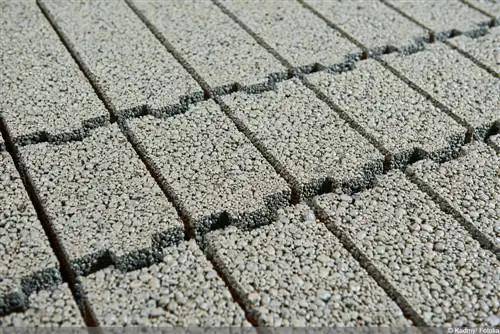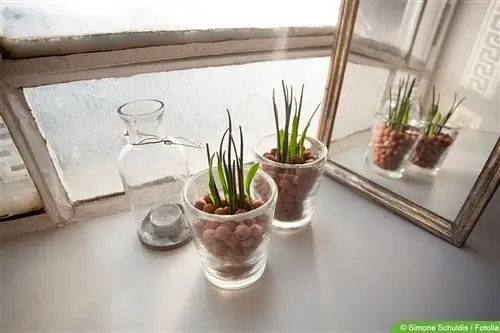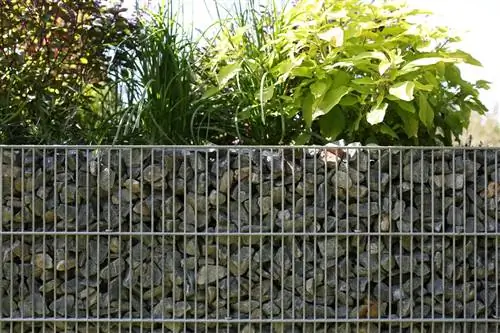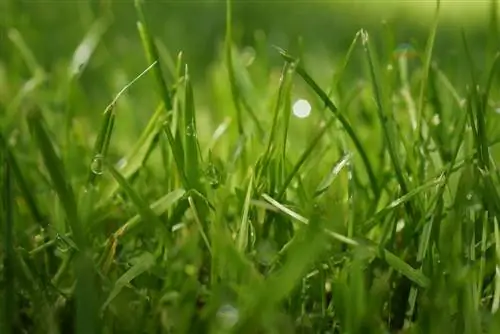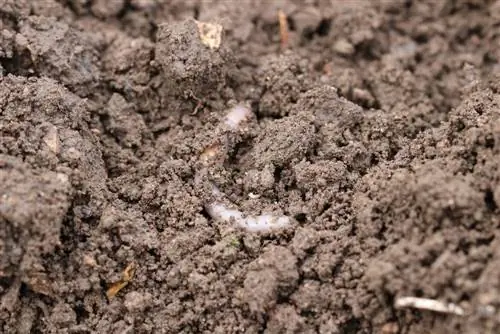- Author admin [email protected].
- Public 2023-12-17 03:39.
- Last modified 2025-01-24 12:45.
Many people probably know expanded clay from plant care, where it is used as a loosening addition to the substrate or to retain moisture. However, it is also used in house construction and insulation. In the latter, however, expanded clay blocks or expanded clay fills are more often used. We explain the advantages and disadvantages of the building material here.
Manufacturing
Expanded clay is made from low-lime clay that contains fine and well-dispersed organic components. This is mixed with water and granulated. It is then fired in an oven at 1200°C. The organic components burn and release carbon dioxide. The clay expands due to the evolution of gas and retains its typical shape and texture. The porous surface and the low weight of the material are characteristic. These properties are also what make it a building material with several advantages.
Features and benefits
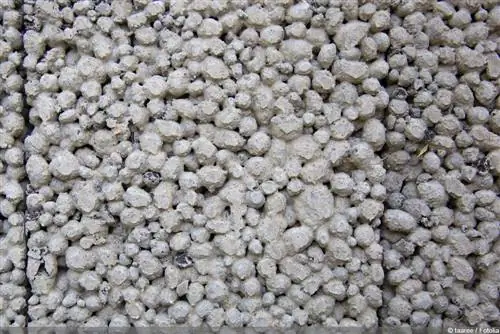
Expanded clay materials have a thermal conductivity of 0.07 W/(m K) to 0.15 W/(m K). With these values, the material is roughly in the middle range compared to other building materials. The thermal insulation properties are good, but are far exceeded by some other materials. Nevertheless, expanded clay variants are often used. On the one hand, this is due to the versatility. On the other hand, the following advantages:
- very good soundproofing properties
- low moisture absorption, therefore in combination with mortar resistant and insensitive to frost
- diffusion-open nature, thus having a positive influence on the indoor climate
- low weight, therefore also suitable for filling cavities
- Environmentally friendly dismantling and recycling
- good combination options with other insulation materials and building materials
- non-combustible building material, belongs to the highest fire protection class A1
- resistant and rotproof
- resistant to pests and mold
- insensitive to acids and alkalis
- can be wallpapered immediately
In addition, the building material has comparatively large price differences and can therefore be cheaper for some purposes than other materials.
Potential disadvantages
Since the natural building material only has moderate to good thermal conductivity properties, it is often not sufficient as a sole insulation material. In order to comply with the current energy saving regulations, it would have to be applied as a layer that is more than 70 centimeters thick. This is not only extremely impractical, but would also increase the costs immensely.
For this reason, the expanded clay is often mixed or combined with other materials. For example, the clay is found as an aggregate in concrete, clay or mortar. Another potential disadvantage is that expanded clay walls can be wallpapered straight away, but they are also very rough. If they are not to be wallpapered, they must be smoothed. In addition, one side must be plastered. This means a potentially higher effort.
Usage
As mentioned, the building material can be used as an aggregate in mortars, concrete and clay or combined with other materials. The mix makes sense because it can result in several advantages. These include:
- improved thermal insulation
- Mortar becomes less susceptible to frost damage and cracks
- Materials receive better sound-absorbing properties
- Building materials become lighter thanks to the surcharge
- Indoor climate can be improved
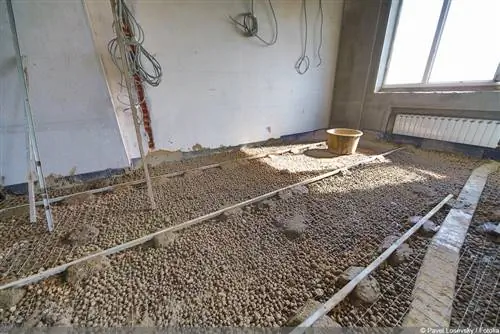
In addition to mixtures with other materials, ready-made expanded clay elements can also be used. In addition to expanded clay blocks, entire walls are also available that are already finished and can be used without mixing and shaping yourself. Another possible use is the expanded clay fill. This is loose expanded clay granules that can be filled into cavities. It can be used, for example, to fill double-shell masonry and thus reinforce or achieve facade insulation. It can be used in cavities, floors and roofs to insulate heat and sound. The bulk material can adapt ideally to the cavities and requires very little effort when introducing it.
Costs
As mentioned, the costs for expanded clay granules and elements can vary widely. Depending on the size, processing and any admixtures or processing of the expanded clay, 5 to 20 euros are due for 50 liters. There is a similarly large spectrum of elements. General statements are therefore hardly possible here. However, there are some options and steps to save money when purchasing. These are:
-
Take advice
Many providers give potential buyers the opportunity to receive individual advice. In this way, the right building material can be found. In addition, effort and costs can be kept as low as possible and previously unknown alternatives can also be found.
-
Cost estimates and price comparisons
Due to the wide price range, costs should be compared comprehensively and cost estimates obtained, especially for expanded clay elements. Because there is great potential for savings here. The same applies to expanded clay blocks and the expanded clay fill.
-
Plan exactly
Costs can also be saved if you plan carefully. This way there is no surplus and there is no need to order subsequent deliveries. If you feel overwhelmed by the calculations, you should consult an expert.

